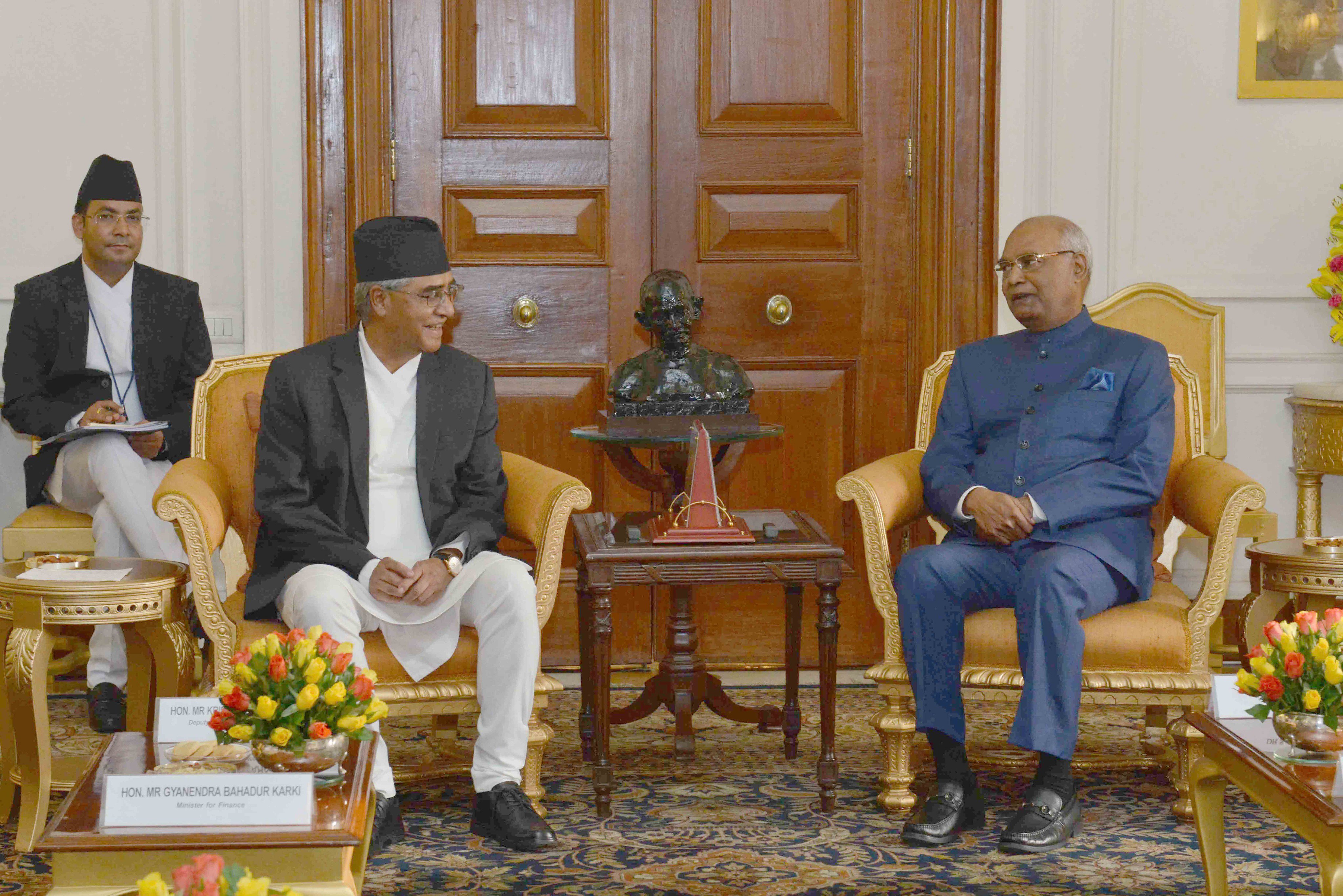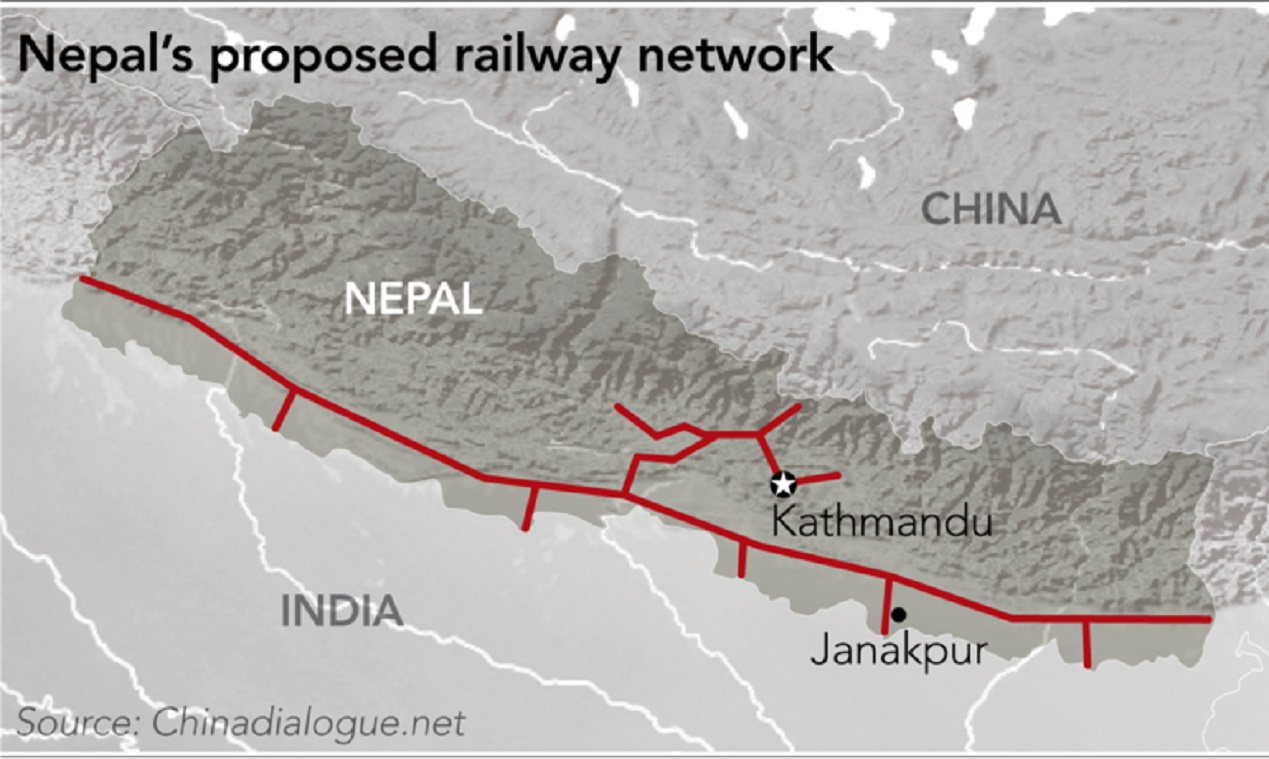
US-China Power Struggle In The Himalayas: Why A $500M Foreign Grant Has Triggered Political Storm In Nepal
Don't Miss
Political parties in Nepal are divided over a mega American development project that seeks to set up a 300-km high-voltage power transmission line and conduct periodic maintenance of 305 km of the country’s strategic road network.
 |
| The Ministry of Finance & the Millennium Challenge Corporation (MCC) signed a Program Implementation Agreement (PIA) on September 29, 2019. (via Twitter) |
Jayanta Kalita, The Eurasian Times, February 22, 2022: So much so that the project, Millennium Challenge Corporation (MCC)-Nepal Compact, could even lead to a breakdown of the ruling coalition led by the Sher Bahadur Deuba government.
Making matters worse is China’s vitriolic attack on the US, accusing it of “coercive diplomacy”. Needless to say, China, which has made deep inroads into the tiny Himalayan nation, wants to retain its influence over Kathmandu.
What Is MCC-Nepal Compact?
The US Government’s Millennium Challenge Corporation (MCC), an independent bilateral foreign agency, has approved 37 compacts worth $13 billion for 29 countries, as of 2019. MCC signed a $500 million compact with Kathmandu in 2017. Nepal apparently had met 16 out of 20 policy parameters, becoming the first country in South Asia to qualify for the grant.
According to reports, Washington has urged Nepal to endorse the MCC-Nepal Compact by the end of this month.
“The compact aims to maintain road quality, increase the availability and reliability of electricity, and facilitate cross-border electricity trade between Nepal and India—helping to spur investments, accelerate economic growth, and reduce poverty,” according to the MCC official website.
Nepal will contribute $130 million in support of the compact—”the largest up-front partner country contribution in MCC’s history—will enable even greater impact and benefits for the Nepali people”.
MCC-Nepal Compact includes two projects – electricity transmission and road maintenance. The first one would involve the “construction of approximately 300 kilometers of high-voltage power lines, equivalent to one-third the length of Nepal, including a link to the Indian border to facilitate electricity trade”.
For the road maintenance work, an incentive-matching fund may be set up “to encourage the expansion of Nepal’s road maintenance budget, in addition to the periodic maintenance of up to 305 kilometers of the country’s strategic road network. This activity will also introduce new pavement recycling technology to Nepal through a small pilot to test and evaluate its potential for broader use,” according to the project proposal posted on the MCC website.
Why Political Parties Oppose MCC
Partners of the ruling coalition — the Communist Party of Nepal (Maoist Centre) and the Communist Party of Nepal (Unified Socialist) – have thrown a spanner in the works. They oppose the Parliamentary ratification of the compact as it would prevail over the country’s existing laws in case of conflicts.
Additionally, the Left-parties are of the view that MCC is part of the US’ Indo-Pacific strategy to counter China, a friendly neighbor. Nepal’s Left parties are known for their proximity to Beijing.
On February 20, Minister of Communications and Information Technology Gyanendra Bahadur Karki tabled the MCC-Nepal Compact in Parliament amid the opposition’s obstruction of House proceedings, The Himalayan reported. The minister tried to convince the opposition, by stating that the government was committed to protecting Nepal’s sovereignty, independence, territorial integrity, and autonomy.
The two ruling coalition partners insisted that the compact cannot be tabled in Parliament without amendments and joined the main opposition, CPN-UML’s chorus against the US grant, a move termed as “double standards” by the opposition.
“The prime minister has just two options left… either to save his alliance or to ratify MCC,” Shashanka Koirala, a senior Nepali Congress leader was quoted as saying by The Kathmandu Post. “He needs to take a call.”
Nepal Caught In US-China Tussle
It was a comment from David J Ranz, then-assistant secretary for South Asia at the US State Department that first stirred the hornet’s nest. During his Nepal visit in May 2019, the official said that MCC was a crucial part of the Indo-Pacific Strategy (IPS), The Kathmandu Post previously reported.
Many leaders in the then ruling party – Nepal Communist Party (led by KP Sharma Oli)– demanded that the government clarify if the MCC was a part of the US strategy. Some of them alleged that then Foreign Minister Pradeep Gyawali had lied to them by saying that the deal was not a part of the IPS on December 26, 2019. Since then, the US grant has been hanging fire.
Incumbent Prime Minister Deuba’s Nepali Congress maintains that the government has to abide by the pact, which doesn’t talk about the IPS, irrespective of comments from any US official.
 |
| A file photo of Nepal’s President Bidya Devi Bhandari with her Chinese counterpart Xi Jinping. (via Twitter) |
Nevertheless, the controversy has once again revealed China’s tight grip over Nepal and its Left parties. The American grant is expected to boost not only the US-Nepal partnership but also strengthen Indo-Nepal ties. New Delhi and Washington are part of QUAD (Quadrilateral Security Dialogue) which Beijing has dubbed the Asian NATO.
China views the MCC-Nepal compact as an instrument to push the US’ QUAD strategy aimed at challenging Beijing’s influence in the Indo-Pacific. Foreign Ministry Spokesperson Wang Wenbin said on February 18 that Beijing opposes “coercive diplomacy,” during a press conference on Friday.
“China welcomes the international community to cooperate with Nepal, contribute to Nepal’s economic development and livelihood improvement, but this should be done based on Nepalese people’s willingness without political conditions,” Wang said.
“As a friendly neighbor and development partner to Nepal, China will continue to support Nepalese people to choose their own development path and support Nepal to make a decision that is in accordance with their country’s interest and demonstrates people’s willingness,” Wang said, noting that China will continue to provide support to and help Nepal’s development.
According to China’s state-owned Global Times, “Critics of the pact in Nepal see it as undermining Nepal’s sovereignty, integrity and constitutional autonomy.” Ironically, Beijing is also accused of militarizing its global infrastructure project, the Belt and Road Initiative (BRI). International experts have long raised concerns stating that the BRI is part of a plan not only for economic development but also for military dominance.
Nepal, which is a signatory to the BRI, is drawing Chinese investment in sectors such as infrastructure and hydropower. Beijing is the largest foreign investor in the Himalayan nation; it has pledged US$188 million for the 2020-21 fiscal year. China has maintained this position six years in a row, according to Xinhua, the Chinese news agency.
Given the current impasse, the fate of the US $500-million grant to Nepal hangs in balance. The US has already clarified that it would review its ties with Kathmandu if the grant is not ratified by February 28, 2022.
Such a move could be big a blow to Nepal’s economy as the US has been the largest bilateral donor to the Himalayan nation for decades, according to The Kathmandu Post.
Jayanta Kalita is the Editor of The EurAsian Times. A former Associate Editor at Hindustan Times, Jayanta has worked for ThePrint, The Times of India, Mail Today among other media outlets. He can be reached at editor.eurasiantimes@gmail.com / editor@eurasiantimes.com
Follow EurAsian Times on Google News




0 Response to "US-China Power Struggle In The Himalayas: Why A $500M Foreign Grant Has Triggered Political Storm In Nepal "
Post a Comment
Disclaimer Note:
The views expressed in the articles published here are solely those of the author and do not necessarily reflect the official policy, position, or perspective of Kalimpong News or KalimNews. Kalimpong News and KalimNews disclaim all liability for the published or posted articles, news, and information and assume no responsibility for the accuracy or validity of the content.
Kalimpong News is a non-profit online news platform managed by KalimNews and operated under the Kalimpong Press Club.
Comment Policy:
We encourage respectful and constructive discussions. Please ensure decency while commenting and register with your email ID to participate.
Note: only a member of this blog may post a comment.